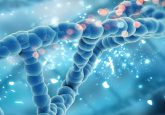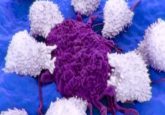Mystery behind cancer resistance in naked mole rats uncovered
A protein that is associated with a locus also found in humans and mice has been identified as the potential source of the naked mole rat’s ability to ward off cancer. The study, which was carried out at the University of Rochester (NY, USA) and published recently in the Proceedings of the National Academy of Sciences, indicates that a variation in the number of proteins produced at this common locus could hold the answer to this apparent cancer resistance.
The INK4 gene locus has previously been identified as the site of synthesis of p15INK4b, p16INK4a and ARF cancer-suppressing proteins in both humans and mice. Lead researcher Vera Gorbunova (University of Rochester) explained that while this locus encodes three separate proteins in humans and mice, in naked mole rats the locus encodes a total of four proteins with cancer-fighting properties.
The study was initiated after Jorge Azpurua (University of Rochester) identified the presence of a fourth protein in the naked mole rat while cloning the p16 protein for a separate experiment.
The fourth protein was formed as a result of the fusion of p15INK4b and p16INK4a, and was observed as being as good as or even better than p15INK4b and p16INK4a at preventing cells from dividing when stressed or mutated.
“We named this novel product pALTINK4a/b, and we believe it may contribute to the longevity of the naked mole rat, including its ability to prevent tumors from developing,” explained Gorbunova.
Previous research carried out by Andrei Seluanov (University of Rochester) and Gorbunova identified HMW-HA as the chemical that activates the anticancer response of the INK4 locus.
“INK4 is the most commonly mutated gene locus in the human cancer,” explained Seluanov. “When that gene is deleted or silenced, it often results in the formation of tumors.” There is also growing evidence to support its role in atherosclerosis and other aging-related diseases.
“Considering how mutations in the INK4 gene are linked to human cancers, the better we understand that gene and control its mutations, the better our chances of controlling some cancers,” added Gorbunova.
To determine the significance of pALTINK4a/b, the team studied the expression of the proteins under different cell growth conditions. The presence of the hybrid protein was found to increase with cell crowding when HMW-HA was present. By contrast, the removal of HMW-HA resulted in the ceasing of expression of pALTINK4a/b, but it could be induced by a range of stresses, such as oncogenes that are able to cause cancer.
The team concluded that pALTINK4a/b responds to both high cell density and HMW-HA, which in turn triggers the anticancer response of the INK4 gene. The presence of pALTINK4a/b in addition to the other three INK4 proteins results in naked mole rats being more likely to prevent growth when there is a risk of malignancy, in comparison with other mammals.
Extensions on the study sought to determine whether pALTINK4a/b is present anywhere in mice and humans, however no evidence was found to support this. Gorbunova commented: “While our work doesn’t eliminate the possibility that the protein exists under some conditions in mice and humans, the results suggest that it’s highly unlikely.”



